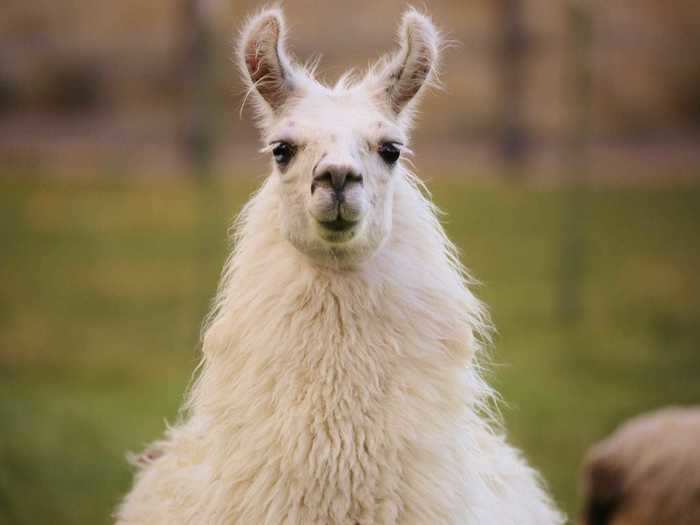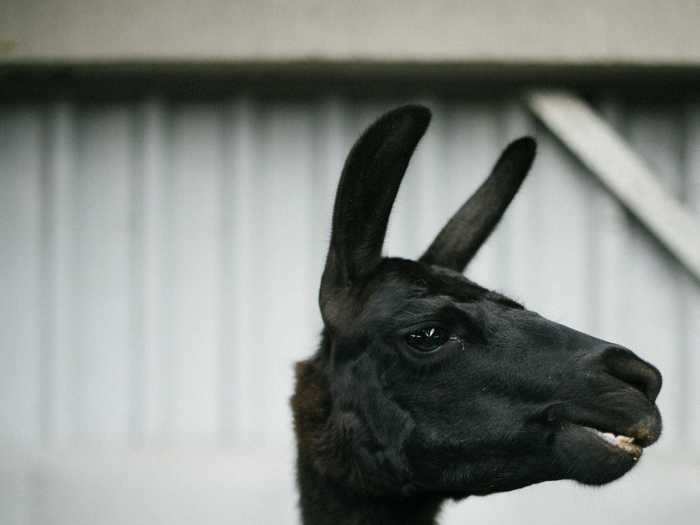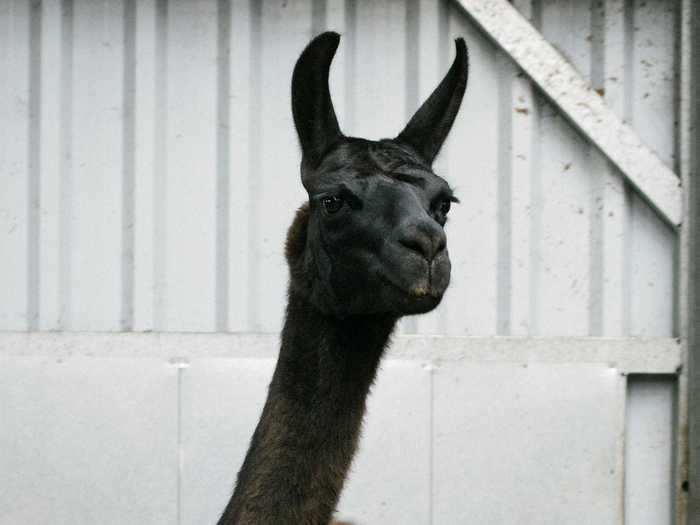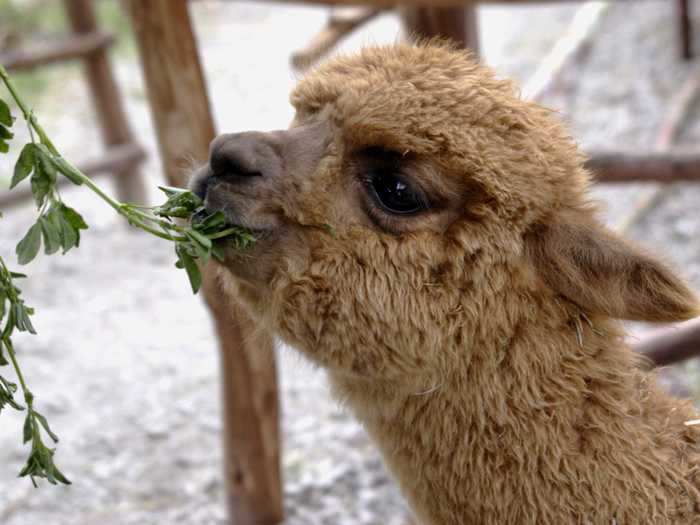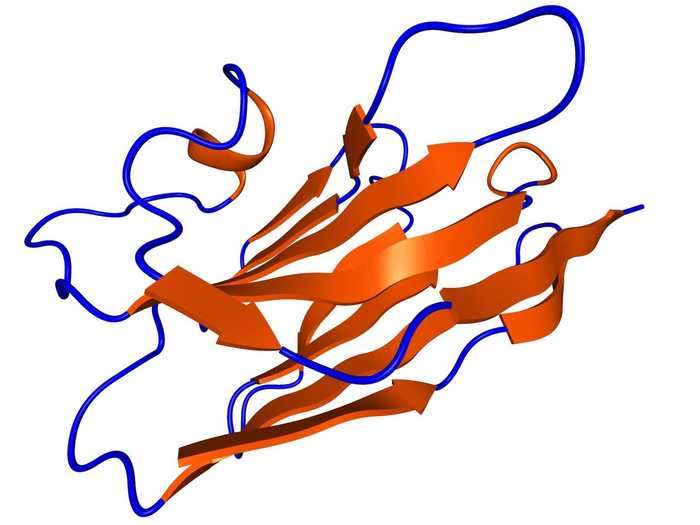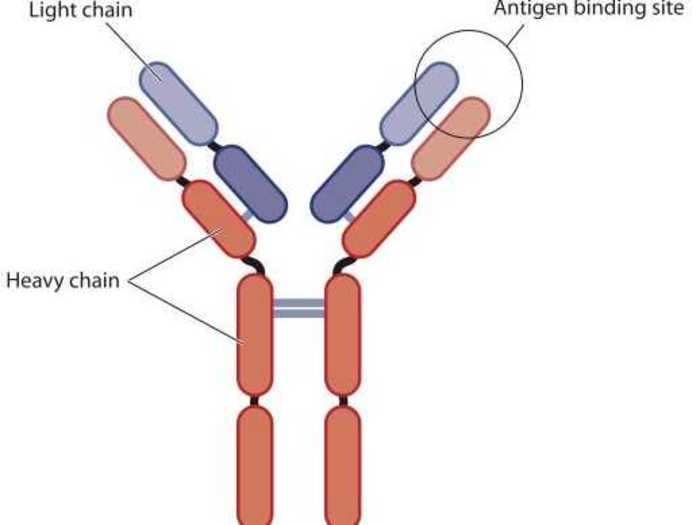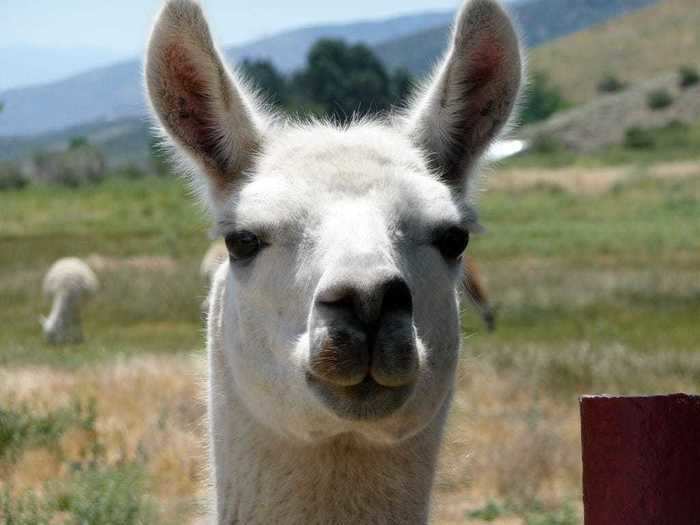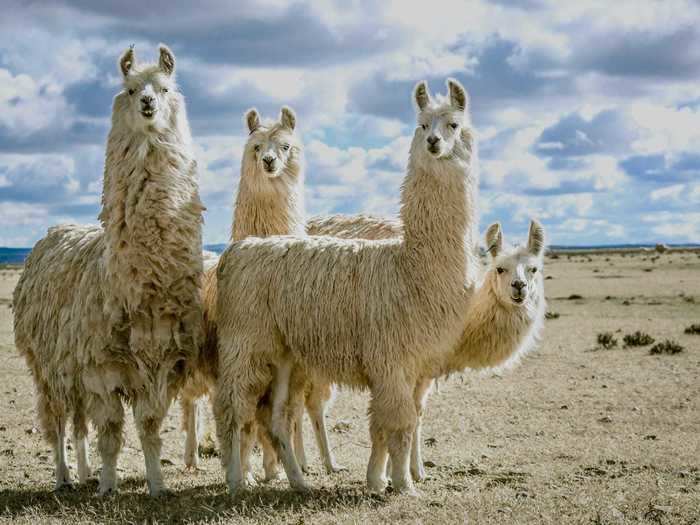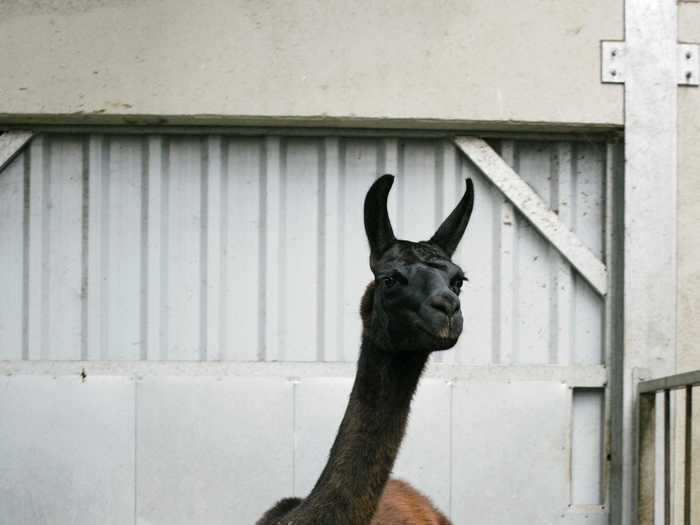Three llamas graze in a field in the Scottish Borders alongside a sign supporting the NHS amid the coronavirus pandemic. New research suggests llamas may have a key antibody that could be used to fight the virus.Jane Barlow/PA Images via Getty Images
- Researchers from the US and Belgium think a four-year-old llama named Winter may hold a key ingredient for antibody research that could help fight the novel coronavirus.
- They found that Winter produces special antibodies that allows her to stave off infections against SARS and MERS — and very preliminary results suggest the antibodies could be used to successfully fight COVID-19.
- But this isn't the first time llamas have been used for antibody research. They've also provided promising treatment candidates for HIV and influenza.
- While humans can only produce large antibodies to fight off diseases, llamas can also produce tiny ones called nanobodies, which could better target viruses because of their size.
- Visit Business Insider's homepage for more stories.
Llamas aren't just the adorable, goofy creatures we know and love them to be. The furry animals could also be important players in antibody research, and may prove to be "heroes" in the fight against COVID-19.
Winter, a chocolate-brown llama with enviably long eyelashes, holds a key antibody that researchers hope could neutralize the coronavirus.
She and 130 other llamas are located on a research farm in Belgium, where they have been used for antibody research against SARS and MERS, both cousins of the coronavirus that causes COVID-19, since 2016.
Llamas' ability to produce tiny, disease-fighting antibodies known as nanobodies have made them a coveted avenue of research. Here's how these furry animals could prove effective in the battle for coronavirus treatments.
Read the original article on
Business Insider
The researchers are moving toward clinical trials for possible COVID-19 treatments. "There is still a lot of work to do to try to bring this into the clinic," Saelens told The Times. "If it works, llama Winter deserves a statue."
But research with llama antibodies is timely and requires multiple stages of testing before it could be considered a viable option in humans. The scientists are still unsure whether injecting a llama antibody into a human would be safe.
Shutterstock
And a 2014 study, also conducted in cell culture, found that one llama antibody was able to neutralize over 95% of HIV strains, providing insight into possible therapy treatments.
Shutterstock
Llamas have also been used for research against other diseases. In 2018, a study found that llama antibodies, when fused together with a human protein, were effective in preventing mice from lethal doses of influenza.
Llamas have special antibodies that could be used to help humans stave off the coronavirus
Tim Graham/Getty Images
Though the research is still in its earliest stages, they hope that the antibodies can eventually be developed for use in humans, by injecting them into someone who has not been infected with COVID-19 in order to protect them from contracting the virus.
A health worker extracts blood from a patient to perform an antibody test for COVID-19 at the Dworska Hospital in Krakow, Poland on April 9, 2020.
Omar Marques/Getty Images
The results were promising. The researchers found that Winter's antibodies effectively blocked the novel coronavirus in cell cultures.
A llama named Winter is seen in this undated photo released by the VIB-UGent Center for Medical Biotechnology in Ghent, Belgium on May 5, 2020.
VIB-UGent Center for Medical Biotechnology/Handout via REUTERS.
The researchers were in the middle of finalizing the study when the COVID-19 pandemic hit. So they transitioned their work to focus on the new coronavirus to see if the same antibodies that fought SARS and MERS would be effective at stopping this coronavirus.
Three llamas graze in a field in the Scottish Borders alongside a sign supporting the NHS amid the coronavirus pandemic. New research suggests llamas may have a key antibody that could be used to fight the virus.
Jane Barlow/PA Images via Getty Images
To conduct the study, the researchers injected Winter with both SARS and MERS viruses, and then took a sample of her blood. Though the researchers were unable to find one broad antibody to fight both viruses, they found that Winter produced two strong antibodies to fight the viruses separately.
A llama named Winter is seen in this undated photo released by the VIB-UGent Center for Medical Biotechnology in Ghent, Belgium on May 5, 2020.
VIB-UGent Center for Medical Biotechnology/Handout via Rueters
According to the researchers, llamas are perfect options because they're domesticated, easy to work with, and less stubborn than other animals. But "if they don't like you, they'll spit," Xavier Saelens, a co-author of the study from the Belgian side of the collaboration, told The Times.
A llama spits on a zookeeper at the London Zoo.
Joe Maher/Getty Images
While sharks have these antibodies, too, the researchers chose not to focus on them because they "are not a great experimental model, and are a lot less cuddly than llamas," Daniel Wrapp, a graduate student and co-author of the new research, told The New York Times.
Baby llama, Cria, Cusco, Peru.
MyLoupe/UIG/Getty Images
In 2016, researchers from the US and Belgium focused their study on llamas — specifically Winter — to find an antibody that could be used to broadly neutralize multiple types of coronaviruses, such as SARS and MERS.
Nanobodies have been used in research for their ability to sneak into crevices and effectively block virus proteins. In this way, llamas are able to target some viruses more effectively than humans.
Nanobody protein therapeutic molecule found in camels, dromedaries and llamas.
Shutterstock
But llamas, sharks, and other camelids have antibodies that do not include light-chain proteins, which allows the arms of the Y to be much shorter. Because of this size difference, the antibodies are able to access smaller pockets and bind to areas of harmful proteins that viruses use to infect us.
In human antibodies, heavy-chain proteins stretch the entire length of the Y shape, while the light-chain proteins are only on the arms of the Y.
Basic structure of an antibody
Shutterstock
Humans can only produce large antibodies that are made up of heavy and light-chain proteins, which come together in the shape of a Y. But llamas are also able to produce nanobodies, which are smaller in size and could help battle viruses more effectively.
Llamas have long been coveted in the scientific community for their ability to produce something that humans don't have: specialized, and very tiny, disease-fighting antibodies known as nanobodies.
Shutterstock
Since 2016, she and 130 other llamas have been used for antibody research against SARS and MERS. But this isn't the first time the furry creatures have been employed in this type of research.
A llama named Winter is seen in this undated photo released by the VIB-UGent Center for Medical Biotechnology in Ghent, Belgium on May 5, 2020.
VIB-UGent Center for Medical Biotechnology/Handout via REUTERS.
Could Winter, a chocolate-brown llama located on a research farm in Belgium, hold the key ingredient to help fight the novel coronavirus?
A llama named Winter is seen in this undated photo released by the VIB-UGent Center for Medical Biotechnology in Ghent, Belgium on May 5, 2020.
VIB-UGent Center for Medical Biotechnology/Handout via Rueters


